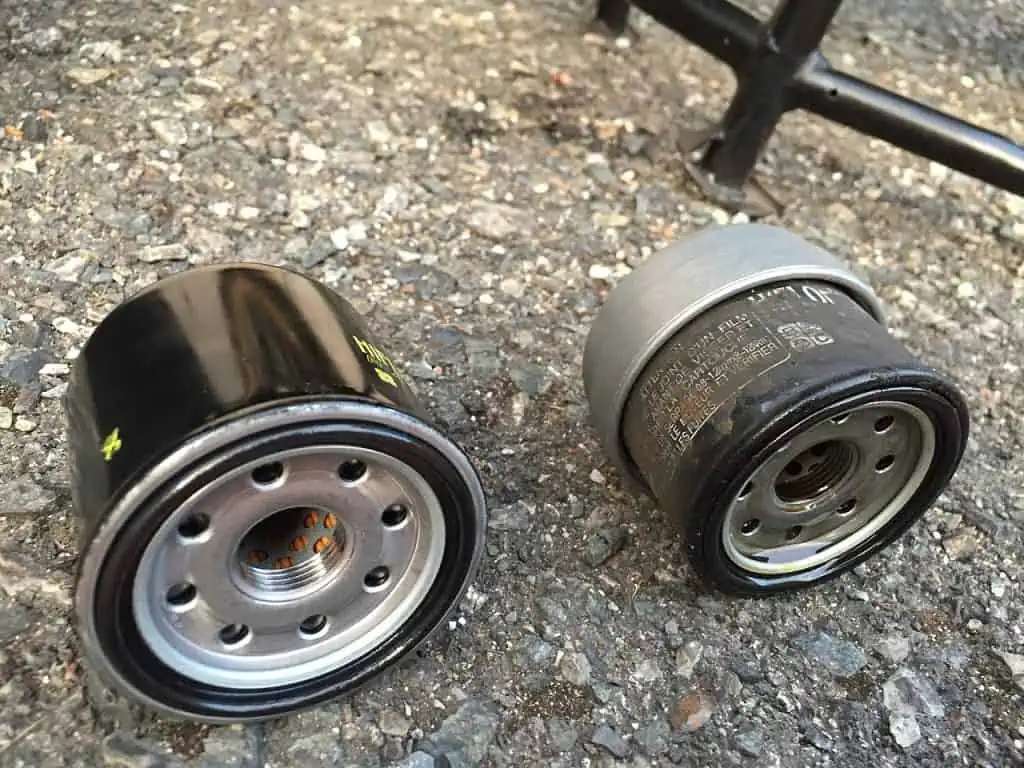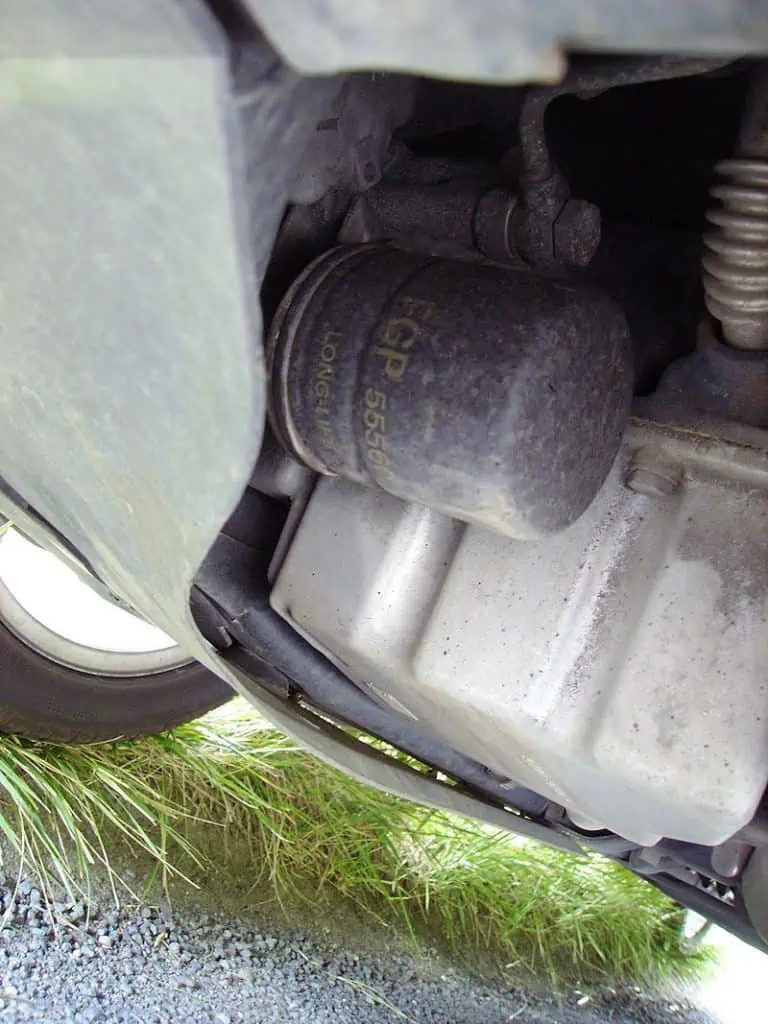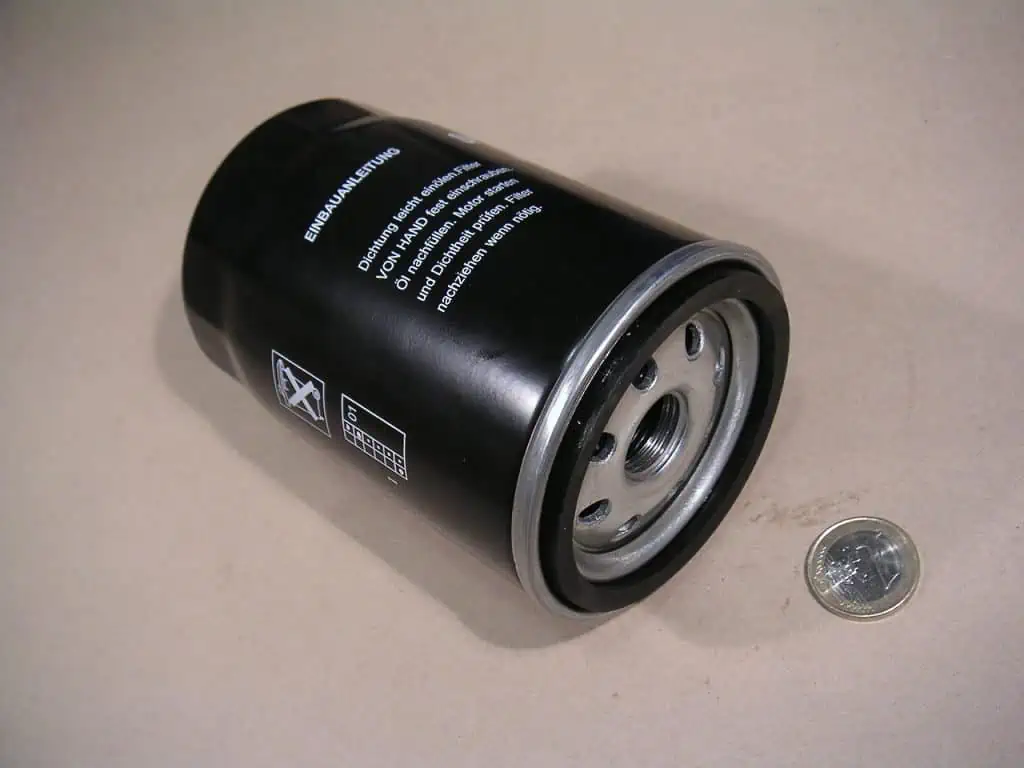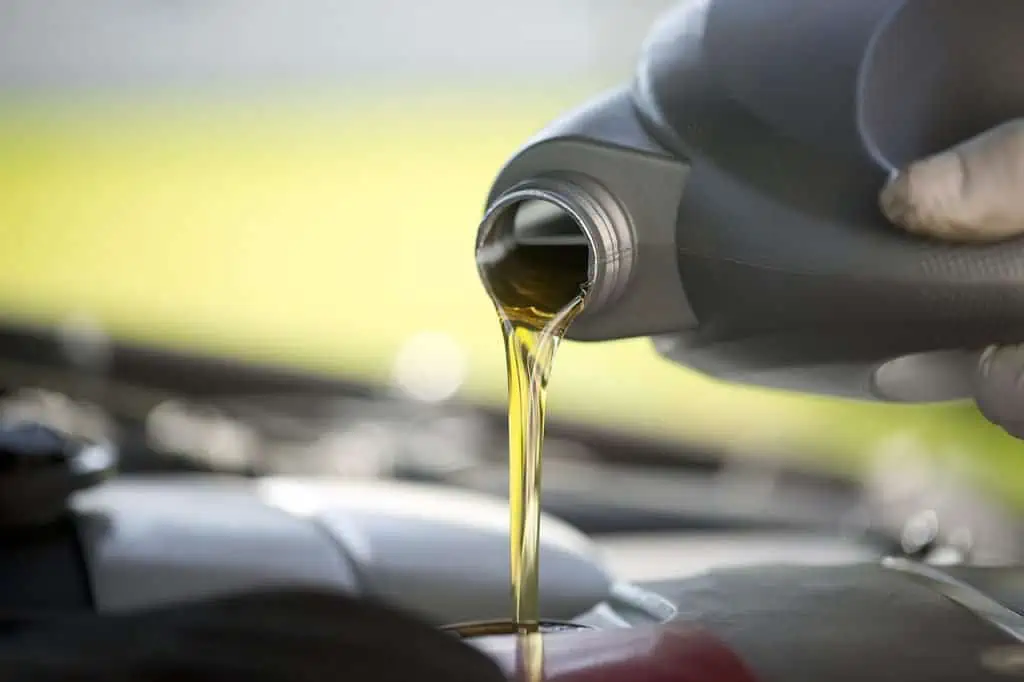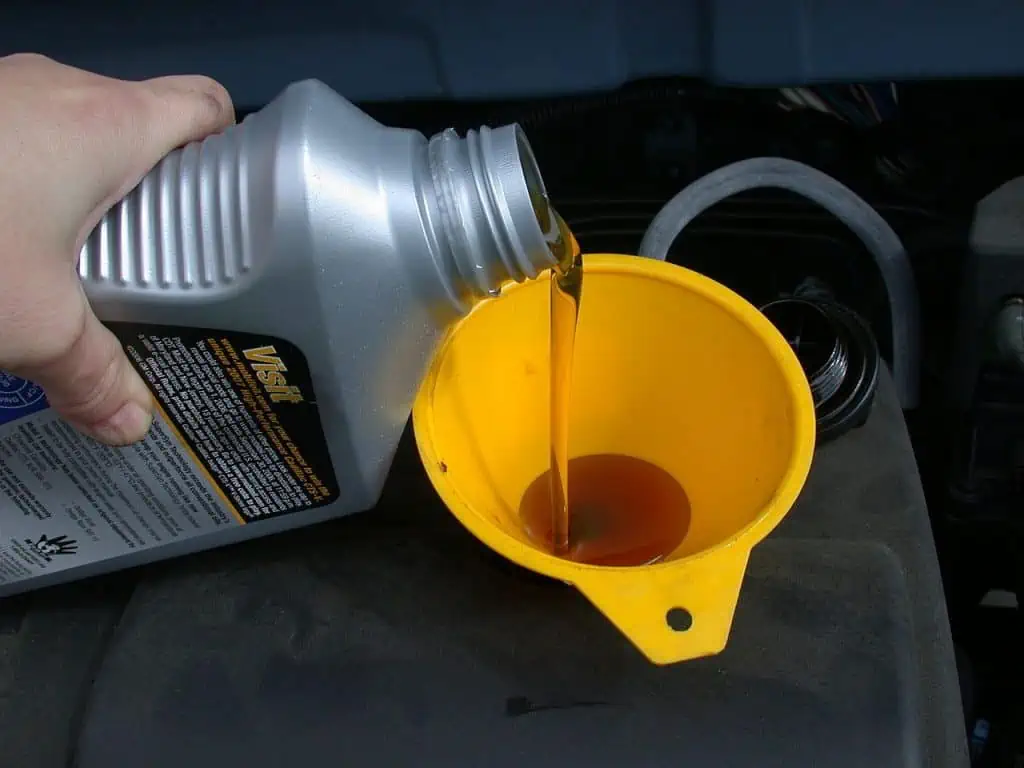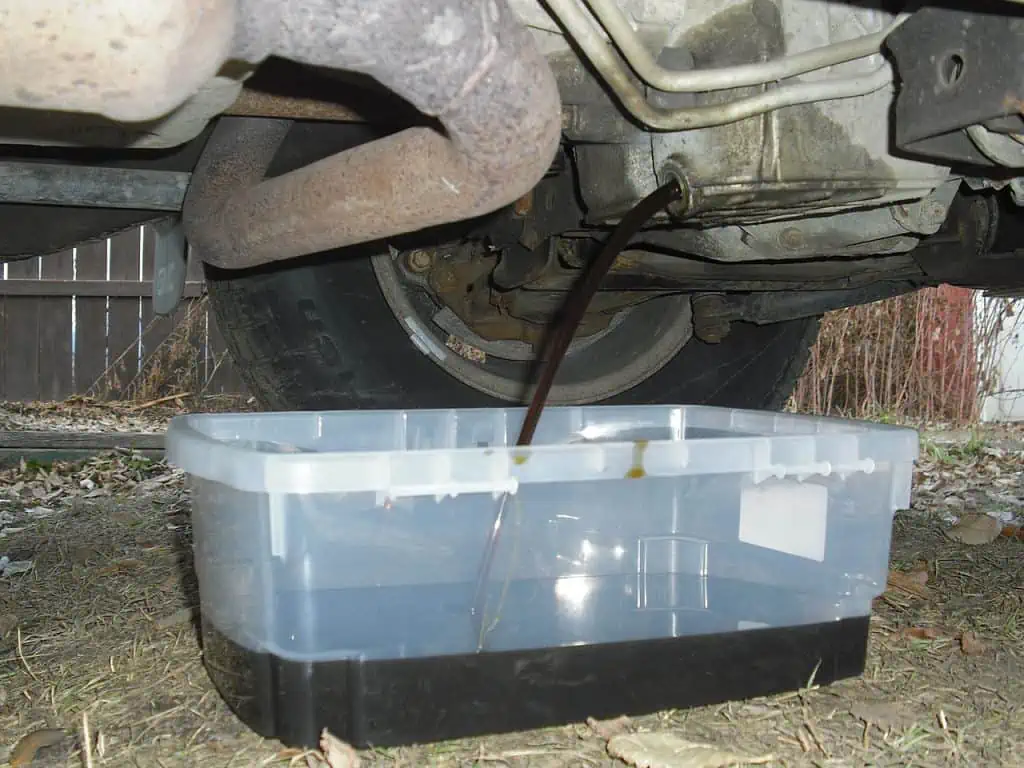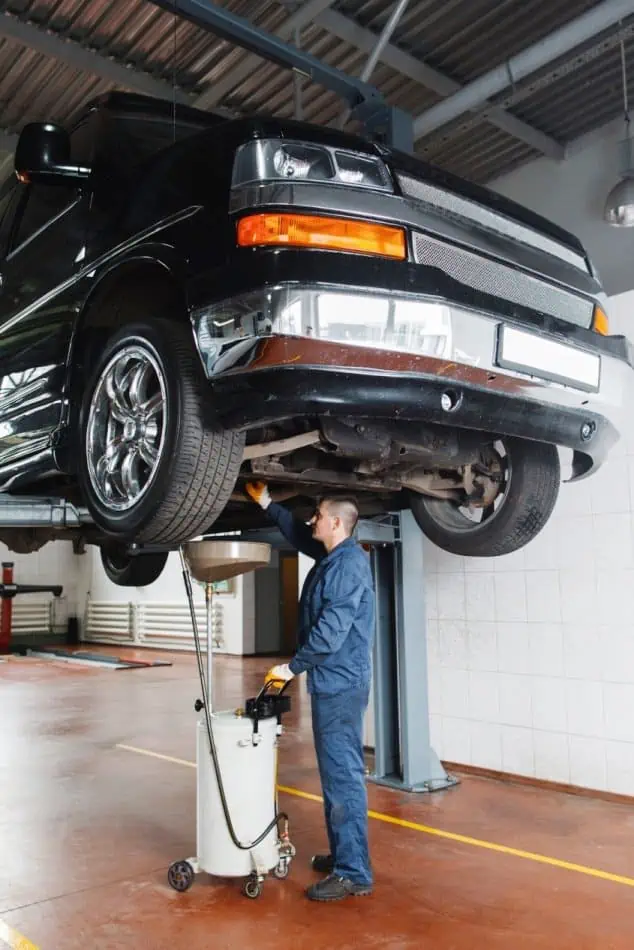During your most recent oil change, did you notice anything odd? similar to metal shavings in oil? If this is the case and you find yourself in this predicament, you have come to the correct spot since there is a lot to discuss on this subject and we will go into great detail regarding these shavings.
This kind of issue can be aggravating. especially if you disregard the issue and act as if it doesn’t exist. Because these shavings have significance and shouldn’t be disregarded by your side.
Metal shavings in oil are a common sign of engine wear, and your oil filter should collect them if you notice them. If you still notice them in your oil, you may need to change the oil, replace the oil filter, or have the engine looked at.
You should practice your troubleshooting techniques and study all the potential reasons for the metal shavings in oil on your car. Not just the causes, but also the methods for diagnosing the issue and discovering solutions. And we’re going to support you in your search for a fix for this problem with your car.
We will first discuss what metal shavings in oil are. Then, we’ll determine the severity of the issue and whether or not you should be concerned. The causes of the metal shavings will then be revealed to us. This will be of great use to you as you diagnose the problem.
After seeing the potential issues that could occur when there are metal shavings in oil and knocking, we will then discover what you can do in this circumstance to quickly resolve the issue. Follow along if you’re interested in learning more about metal shavings in oil.
Metal Shavings In Oil – What are They?
Let’s discuss what the metal shavings in oil are before moving on to more complicated subjects. For those who are new to cars or don’t have much prior knowledge, we need to give a brief introduction. What precisely are metal shavings?
Small bits of metal known as metal shavings have gotten into the engine oil. It’s crucial to not panic and stop believing in the possibility of the end of the world if you start to detect metallic shavings in the oil.
New (left) and used (right) oil filter by Petrb / CC BY-SA 4.0. To address any worries about metal shavings in your oil, check to see if the oil filter has recently been replaced by your professional.
It’s incredibly challenging to see these tiny metallic particles, which can occasionally be as little as human hair. They are there, though. You will see some of these flakes on your fingers after applying the oil.
Alternatively, you might use a magnet and submerge it in the oil. When you notice that some tiny particles are beginning to stick, you may fear that the engine is about to shut down. But in these situations, it’s crucial to attempt to remain calm and avoid panicking.
In some cases, metal shavings in oil are acceptable, especially for engines with higher mileage. One effect of wear and tear inside the engine is metal shavings. You shouldn’t be that terrified of them as a result. Taking some preventative measures, which we will discuss later in the essay, is crucial.
Let’s see how seriously you should take the issue of metal shavings in oil in the following chapter and what you may do as a preventative measure. We shall later go through the reasons why metal shavings in oil frequently occur as well as their causes. So follow along with us.
How Serious Are the Metal Shavings In Oil Problem?
Now let’s understand more about the significance of this issue before we go into the causes of metal shavings in oil. Should you or shouldn’t you be concerned?
The gist of the response is that it depends on how many metal shavings are present. You shouldn’t be concerned if these shavings are so tiny that they are hardly noticeable.
However, if these shavings resemble large chunks, you should be concerned and treat the situation seriously. Big chunks are rarely present. A ton of metal fragments occasionally fall into the oil pan, though, when the piston rings shatter. otherwise, harm the cylinders. As a result, when you see something like this, you must move fast and attempt to address the issue.
You should thus look at the type of metal shavings present in the oil to better understand where this problem originates. You should make an educated estimate as to the potential origin of the issue based on the sort of metal shavings.
Which are the Different Categories of Metal Shavings In Oil?
Let’s now talk about the several kinds of metal shavings that are available, as we alluded to above. As you are aware, the type of metal might help you determine what might be the problem.
Due to this, we will explore the three forms of metal that can be found in metal shavings in oil in this chapter.
1. Shavings of Aluminum Metal
Aluminum metal shavings in oil are frequently apparent when there is excessive engine wear. Consider an aluminum engine block as an example. Metal shavings made of aluminum will then be seen.
Aluminum alloys are also used to make rod bearings. Because of this, you should also take them into account as one of the possible causes of metal shavings in oil.
2. Shavings of Copper Metal
If copper metal shavings are found, you are in serious trouble. However, why is that so? What do metal shavings in oil about copper mean?
They are implying that the rod bearings are essentially worn out. If you look closely, you’ll see copper, a yellowish metal, in the oil. It indicates that the rod bearings will soon require replacement.
if the rod bearings are not replaced. Soon, the engine will begin to knock. Additionally, the cylinder walls and crankshaft will sustain significant harm and wear when the engine begins to knock. Therefore, take care of these copper metal shavings in oil. You must take things seriously when these shavings occur.
The spin-on oil filter on a Saab by Ballista / CC BY-SA 3.0. If you find metal shavings in your oil, your oil filter should catch them as they are a common indicator of engine wear. You could need to change the oil, replace the oil filter, or have the engine checked if you still see them in your oil.
3. Shavings of Cast Iron and Steel Metal
Cast iron or steel metal shavings are the final variety of metal shavings in oil that we will discuss. If the engine block is made of cast iron, these metal shavings frequently occur.
The piston rings, rods, crankshaft, camshaft, and pistons are additional parts constructed of cast iron or steel. When worn, all of these parts result in metal shavings in oil. They vary in quantity, with some being less and others being more. All of these elements, however, have a chance of being plausible causes of this issue.
What Causes Metal Shavings In Oil Issues?
Let’s now spend some time discovering the causes of the metal shavings in oil phenomenon. Knowing the causes will enable you to identify your mistakes, comprehend how the issue arose, and determine the steps you need to do to stop it from getting worse. Let’s go into more detail about the causes of metal shavings in oil.
1. Uncommon Oil Changes
Let’s now talk about the causes of the metal shavings in oil. What is the main cause of this problem and who is to blame?
The infrequent oil changes are the main causes of metal shavings. Changing your engine’s oil prolongs its life. The engine will experience more wear and tear the less frequently the oil is changed.
Engine oil is a lubricant that is necessary for your engine’s life, as you are surely aware. This lubricant will begin to harm the engine internals if it is not functioning properly.
As the internal friction increases and the components operate roughly, metal shavings start to show up. The level of internal damage will increase the more frequently the engine operates in this manner.
Your engine will thank you if you perform more frequent oil changes. The oil should be changed as soon as possible. This engine won’t let you down or result in metal shavings in oil if you follow these instructions to get the most mileage out of it. Let’s move on to the following likely cause of this issue.
2. Exhausted Rod Bearings
Rod bearing wear is the second most likely factor that could result in metal shavings in oil. Between the crankshaft and the rod, these bearings are located. The rod encloses them in its body.
The rod bearings may occasionally wear out early due to design factors, such as manufacturers employing poor-quality rod bearings or few oil changes.
Some cars, such as the BMW M5 E60 and the E92 M3, are infamous for having this problem. And all of this after only a few miles.
It’s crucial to detect rod bearing deterioration while the bearings are still in good shape. They become unbalanced as they wear more. most frequently resulting in engine failure. Furthermore, this is not what you want. So be on the lookout for copper metal shavings in oil.
3. Damaged Piston Rings
Wear-and-tear on the piston rings is the second cause of metal shavings in oil. These piston rings, after all, frequently fail in higher-mileage engines.
The likelihood that these rings will become trapped in the piston ring and fail to contract increases with engine age and mileage. They’ll eventually disintegrate and drop into the oil pan.
Spin-on oil filter, showing an annular seal and screw-on thread by Nutzdatenbegleiter / CC BY-SA 4.0. Every time an amateur mechanic changes the oil, the oil filter could also need to be changed. This mistake is really serious. It could lead to several problems that could block the filter and affect how well your automobile runs.
This indicates that you are losing compression, which is not desirable. Therefore, be wary of these larger pieces that can resemble a ring-shaped component.
As we previously said, you will lose performance as well as compression when this occurs. Therefore, these things are related. Keep an eye out for metal shavings in oil.
4. Damage to the Engine
Engine damage is the third most frequent cause of metal shavings in oil. As we all know, an engine can occasionally sustain internal damage, such as a broken piston or other damage that leads to further wear and tear.
This is the most noteworthy instance of running for its money engines and overheated engines. I refer to being pushed a lot by this. Some engines desire to be treated gently and don’t want that to happen.
As a result, it regularly occurs that some engines experience increased internal wear and tear as well as metal shavings.
The final likely explanation for metal shavings in oil is this. Let’s now analyze the potential issues that these shavings in your engine could lead to.
What Problems Do the Metal Shavings In Coil Cause In a Car?
Let’s now talk about some of the issues that these metal shavings in oil could bring about for your engine. These problems have a tight connection to engine damage. But for you to have a better understanding of the subject, we will go over them in detail in the following chapter.
1. Difficulty Starting the Car
The car’s difficulty to start is the first issue that may arise when there are metal shavings in oil. But why is there an issue?
Well, the absence of compression inside the engine is the reason for this issue. The piston rings and bearings inside the engine are all worn out, so even though it is trying to find some compression to start, it is unable to do so.
The engine has died. This engine needs to be rebuilt before it can be used again. If you wish to give the engine the ability to hold compression and start again, it needs to be rebuilt. Let’s now discuss the second potential issue with metal shavings in oil.
2. Continuous Stalling of the Engine
The circumstance where the car continues stalling is another issue that could arise from metal shavings in oil. The issue with the engine not starting is preceded by this.
You’ll have problems with stalling just before the engine dies. Additionally, the engine won’t be able to pull as hard as it could when its compression was good.
Overall, a very horrible circumstance that you hope never to experience. And practically all of these engines that experience metal shavings in oil experience this. Simply put, the engine shuts off because it cannot maintain compression. Then, to start, you must crank it one more. Because of this, you should avoid metal shavings in oil.
3. Sounds of the Engine Knocking
The knocking sound is another fairly typical issue that could be brought on by metal shavings in oil. You can tell an engine is going to the scrap yard when it starts to knock. However, why does this occur?
Pouring fresh motor oil into an engine by Aaberlanga / CC BY-SA 4.0. Metal shavings are primarily caused by infrequent oil changes. Oil changes help your engine last longer. The less often the oil is changed, the more wear and tear the engine will endure.
Well, these copper metal shavings in oil are the reason why this occurs. The copper metal shavings are the first indication that there is a problem with the engine’s bearings. You will find it easy if the replacement is made on schedule. The engine won’t need to be completely replaced.
However, everything is out of balance as the engine begins to knock. The pistons, cylinder walls, and crankshaft all sustain damage. damage throughout the entire engine. Because of this, metal shavings in oil shouldn’t be disregarded.
4. The Check Engine Light Illuminates
The check engine light is the final issue we’ll discuss that might be caused by these metal shavings in oil.
Every engine, as you are aware, has a knock sensor on the side that checks for knocking. This sensor will activate even with the smallest knocking, displaying the check engine warning on your dashboard.
You could initially be perplexed by this activity in your car. However, if you pick up an OBD2 scanner tool, you will be able to identify the issue by discovering the faults that the sensors are generating. After that, you can proceed to fix the issue with your car. And that’s what we’ll discover in the section that follows, where we’ll talk about what to do if there are metal shavings in oil.
5. A Huge Reduction In Engine Performance
When you notice a considerable decline in your vehicle’s overall power, it is the first and most obvious evidence that your engine oil is bad and that metal shavings are not anything to overlook.
Have you ever attempted to press the gas pedal and discovered that your car is not responding or giving you the necessary energy? You should check the engine oil to address the issue because that can be the cause.
Always keep in mind that decreased engine power can be caused by a variety of factors, not just filthy or contaminated engine oil. Therefore, a comprehensive inspection by your mechanic is required to identify the real problem and fix it.
6. Unusual Ticking Noise
Your engine’s power may decrease, and you might also hear an odd ticking sound coming from it. This can be an issue with the oil or it might be connected to other things that need your constant attention.
Is the ticking sound caused by contaminated oil or something else? The engine ticking signifies a major problem that needs to be fixed right away, so your mechanic needs to be aware of it.
The issue becomes more difficult the longer you wait to solve it. Auto experts generally advise seeking professional assistance anytime you discover the initial indications of component damage. There is a very high likelihood that you can solve the issue after you notify the mechanic promptly without having to install measurement components.
7. Decrease In Fuel Economy
Your engine may become overheated and end up using more fuel than it should when it is under stress and not receiving clean oil. Tracking how often you stop at the petrol station to fill up your car will help you realize this.
Keep in mind that many other issues may also be related to poor fuel economy. Therefore, based solely on observing how much fuel you consume, you cannot immediately conclude that there are metal shavings in your oil.
Using a funnel to assist with a motor oil refill by Dvortygirl / CC BY-SA 3.0. If you replace your oil more frequently, your engine will appreciate you. It’s time to change the oil as soon as possible. If you follow these guidelines, this engine won’t let you down or produce metal shavings in the oil, allowing you to get the greatest mileage possible.
8. Unusual Harsh Idling
Your car shouldn’t idle rough when it’s set to idle. Rough idling may be a sign of a significant internal problem with your car. You should look into this because it might be connected to the oil but also a lot of other things.
If your automobile seems to be idling erratically, you must talk to a mechanic and clearly describe the problem. You must also give more information regarding the frequency of your engine’s strange roughing and whether you always notice it when you start your car.
9. Quite Clear White Exhaust
Finally, you’ll notice that the exhaust has a clear white hue when metal shavings are present in your oil. Especially if you’re driving a newer vehicle, the exhaust usually doesn’t have particularly noticeable color.
But if you start to see this white emission, it ought to make you think of anything. Keep in mind that it’s common for your car to occasionally emit white smoke when you start it on a chilly morning. The moment this starts to persist, though, is when you should start to worry.
Due to metal shavings, the white exhaust does not necessarily indicate filthy oil. It might also indicate something else, such as a burst head gasket. The general guideline in this situation is to deal with the issue, whether it has anything to do with the oil or not.
How Do You Respond to the Metal Shavings In Oil Problem?
Let’s look at what you can do if you ever find metal shavings in oil. What will be the obvious course of action when this issue arises?
The first and most crucial step is to not lose your cool. Stay calm, down a glass of water, and consider your next move.
Finding out what kind of material these metal shavings are made of will be the first logical step. If it’s made of copper, there must be a problem with the bearings. If it is aluminum, the block is probably broken. Alternatively, if the chunks are made of steel, either the crankshaft, pistons, or camshaft is to blame for these issues.
Check to see whether any pieces resemble the rings of a piston as well. This is also encouraging. In either case, a more thorough inspection and engine disassembly are required for this issue. If you are concerned about the engine’s health, you typically do this.
If problems like this are found early enough, they can be repaired for the correct price. if the engine is beyond repair. The entire engine will then need to be replaced.
How Can Metal Shavings In Oil Be Fixed?
What is the solution to metal shavings in oil then? The easiest thing for you to do on your own is to clean the oil pan and flush the oil.
The state of your engine can be learned a lot from the oil pan. Many hints regarding what might be wrong with the engine can be found there.
If you have more experience, you can also take the rod bearings off to inspect them. If the rod bearings are worn out, it might be wise to perform a light refresh.
Oil is being drained from a car into a drip pan by Myke Waddy. The most straightforward task is to change the motor oil, which you must do. Check the date of your previous oil change to see if you’re overdue. If so, find out from your mechanic what else has to be done given how long the last oil change took.
There, you will also be able to inspect the crankshaft’s condition and check for any damage. If there is, polishing the crankshaft is necessary to restore it to factory specifications.
These are the general options you have in this situation. Or, if you have enough experience, you may simply remove the engine and rebuild it. But this isn’t a job that’s good for beginners. Even skilled mechanics lack the knowledge necessary to properly rebuild engines. This is why taking your automobile to a shop is the best course of action if you notice metal shavings in oil.
One of the following options is available if you determine that your car’s oil includes metal shavings:
1. Change the Oil
You need to change the motor oil, which is the easiest task to complete. You might be past due for an oil change, so check when you last changed it. If so, ask your mechanic what further has to be done in light of the previous oil change’s delay.
Even if you don’t make all the suggested modifications, switching to a different oil, for now, can be a workaround while you investigate the issue that is resulting in metal shavings in your oil.
2. Replace the Oil Filter
The oil filter may need to be changed every time an untrained mechanic does an oil change. This is a serious error. It might result in a variety of issues that could clog the filter and have an impact on how well your car performs.
Verify whether the oil filter was recently changed by your professional to address any concerns with metal shavings in your oil. If that wasn’t changed, now is an excellent time to do so and make sure your car is operating properly.
3. Examine and Repair the Engine
Last but not least, there may be instances where your engine has major internal issues that cause ongoing metal chipping from the various internal components. In that scenario, your mechanic must do a thorough examination and determine the cause of the issues your engine is having.
Your technician will have a list of suggestions for what needs to be done following the inspection when it is finished. For instance, he might advise having your engine’s specific parts replaced. However, in extremely critical situations, the mechanic might advise spending thousands of dollars on repairs to replace the complete engine.
Normally, we advise you to conduct a thorough analysis to decide whether it would be better to sell the car than to fix it. For instance, now is the ideal time to sell your car and purchase a better one if you can establish that repair costs are approaching 75% or more of the value of your vehicle.
However, you advise carrying them out if your payroll expenses are low. As a result, your car doesn’t complain about any other problems that could increase your expenses.
How Much Do the Metal Shavings In Oil Repair Cost?
Let’s now talk further about how much it would cost to use metal shavings in oil to solve this issue. And how large the engine is has a significant impact on this.
Consequently, the more extensive the engine damage. the higher the cost of the repairs will be.
If all that is required are new rod bearings, you might anticipate getting the best deal. You should budget between $1,200 and $1,600 for this.
A truck’s oil is being drained at an oil change shop by Aaberlanga / CC BY-SA 4.0. Metal shavings appear as internal friction rises and the parts perform erratically. The more often the engine runs in this manner, the worse the internal damage will get.
The engine and machine work must be completely disassembled to do everything else. It might also be expensive. You may pay anything between $2,500 and $5,000 for this. And when the cost of repairs is so high. Buying a used engine would be your best option.
You can get it by replacing your engine for $3,000 with a used engine. Not all engines are typically inexpensive. Therefore, you must be aware of the expenses related to buying and installing a used engine.
These expenses can exceed $4,000 in total. However, I believe that buying a used engine with low mileage is a much better option than having a high-mileage engine rebuilt. That is how I see this issue. Let’s wrap up this article now.
How Can Metal Shavings In Oil Issues Be Avoided?
It is advised that you take proactive measures to avoid the metal shavings in your oil in the first place if you are worried about the issue. For instance, to prevent metal shavings in your oil, automotive professionals advise starting with the following:
- Maintain a regular schedule for oil changes and never skip one.
- Every time you change your oil, don’t forget to replace the oil filter.
- Check the engine frequently and look for any early indications of engine deterioration.
- Perform all scheduled maintenance as directed by the owner’s manual of your car on time.
The Conclusion
We have spoken quite a bit about metal shavings in oil in this article. First, we discovered what metal shavings are. The several kinds of metal shavings were then discussed, and we concluded that they may be made of steel, aluminum, or copper. Depending on the extent of the engine’s internal damage.
Next, we discussed the causes of metal shavings in oil. Poor engine maintenance, wear and tear, and other issues that frequently arise inside the engine are, as we said, the most likely culprits.
After learning the causes, we also discussed the kinds of issues that metal shavings may cause. Rod knocking, low compression, stalling, the check engine light, etc. may be examples of this. Finally, we discovered what you could do to tackle this situation and how much it would cost to resolve it. Overall, fixing this wasn’t cheap.
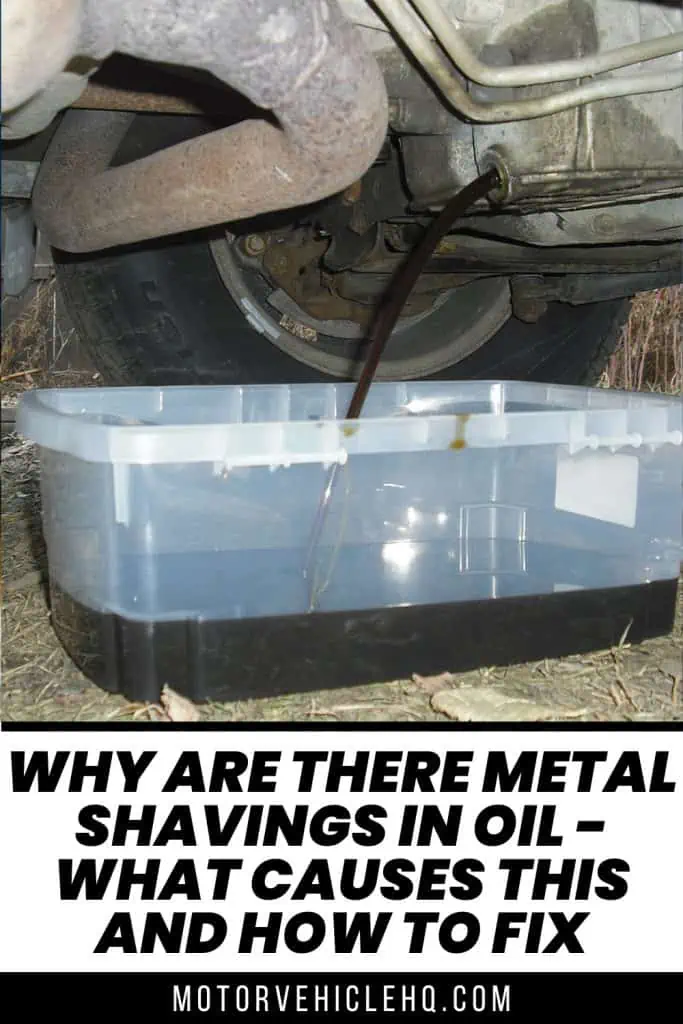
Oil is being drained from a car into a drip pan by Myke Waddy

Jim Wicks is the founder of MotorVehicleHQ. With over two decades of experience in the automotive industry and a degree in Automotive Technology, Jim is a certified car expert who has worked in various roles ranging from a mechanic, car dealership manager, to a racing car driver. He has owned more than 20 cars over the past 15 years. Ask him about any vehicle you see on the road and he can tell you the make, model and year. He loves the aesthetics of all things cars, and keeps his vehicles in pristine condition.
In his free time, Jim enjoys getting his hands dirty under the hood of a classic car or taking long drives along the country roads. His favorite car? A 1967 Shelby GT500, a true classic that, according to Jim, “represents the pure essence of American muscle.”
